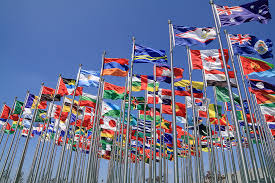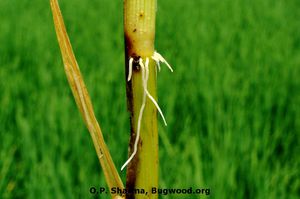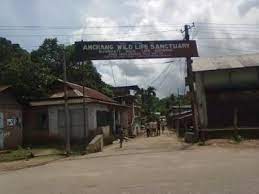Today’s Current Affairs: 6th Jun 2023 for UPSC IAS exams, State PSC exams, SSC CGL, State SSC, RRB, Railways, Banking Exam & IBPS, etc
Table of Contents
Duty-Free Quota-Free (DFQF) Scheme:

According to a report by the least developed countries Group at the World Trade Organisation (WTO), the Duty-free quota-free (DFQF) scheme remains unutilized by the LDC nations.
- The decision to provide duty-free quota-free (DFQF) access for LDCs was first taken at the WTO Hong Kong Ministerial Meeting in 2005.
- India became the first developing country to extend this facility to LDCs in 2008, providing market access to 85 per cent of India’s total tariff lines
- The scheme was expanded in 2014 providing preferential market access on about 98.2 per cent of India’s tariff lines to LDCs.
World Trade Organisation (WTO):
- It was set up on 1st January 1995 and was born out of the 1986-94 Uruguay Round of Negotiations.
- It is the only global international organization dealing with the rules of trade between nations.
- It is the successor to the General Agreement on Tariffs and Trade (GATT)
- The main function of the WTO is to ensure that trade flows as smoothly, predictably and freely as possible.
- It further consists of two principles, the Most-favoured Nation (MFN) principle and the National treatment principle.
- It is a ‘member-driven’ organisation, with decisions taken by consensus among the member governments.
Foot Rot Disease:

Several farmers raised the concern over “foot rot” disease in the saplings of the Basmati variety of paddy in the nurseries.
- Foot rot disease also known as Bakanae Disease.
- It is a soil and seed-borne deadly fungus which is seen only in the Basmati variety of paddy.
- It is caused by ‘Fusarium verticillioides’ fungi.
- The infected saplings turn pale yellow and become elongated and later, the saplings start drying and usually die.
- Symptoms sometimes appear after transplantation and the infected plants first grow way taller than the normal plants and die after a few days.
- India is known for its Basmati rice, with the produce from seven States — Jammu and Kashmir, Himachal Pradesh, Punjab, Haryana, Delhi, Uttar Pradesh and Uttarakhand — earmarked for Geographical Indication.
Amchang Wildlife Sanctuary.:

The Indian Army generated a unique ecosystem for peaceful co-existence with wild elephants in Amchang Wildlife Sanctuary.
- Amchang Wildlife Sanctuary is located in the state of Assam.
- It comprises three Reserve forests-Khanapara, Amchang, and South Amchang.
- It stretches from the Brahmaputra River in the northto the hilly forests of Meghalaya in the south, forming a continuous forest belt through Meghalaya’s Maradakdola Reserve Forests.
- Flora:Khasi Hill Sal Forests, East Himalayan Mixed Deciduous Forest, Eastern Alluvial Secondary Semi-evergreen Forests and East Himalayan Sal Forests.
- Fauna:Flying fox, Slow loris, Assamese macaque, Rhesus macaque, Hoolock gibbon, Porcupine. White-backed Vulture, Slender-billed Vulture.
- Tree yellow butterflies (gancana harina) are found at the Amchang wildlife sanctuary which is indigenous to Thailand, Malaysia, Singapore and northeast India
World Environment Day 2023:

World Environment Day is being celebrated across the globe on June 5 every year.
- World Environment Day is observed on the 5th of June every year since 1973 as part of the United Nations Environment Programme to build awareness to save life on planet Earth.
- The event has been led by the United Nations Environment Programme (UNEP) since its inception in 1973.
- The theme of this year’s World Environment Day will focus on solutions to plastic pollution under the campaign #BeatPlasticPollution.
- This year’s event is hosted by Côte d’Ivoire in partnership with the Netherlands.
United Nations Environment Programme (UNEP):
- It is the leading global authority on the environment.
- Mission is to inspire, inform, and enable nations and peoples to improve their quality of life without compromising that of future generations.
- It is driving transformational change by drilling down on the root causes of the triple planetary crisis of climate change, nature and biodiversity loss and pollution.
- Headquarters: Nairobi, Kenya.
Kathakali Dance Theatre: A Visual Narrative Of Sacred Indian Mime

KK Gopalakrishnan has recently released a captivating book titled “Kathakali Dance Theatre: A Visual Narrative of Sacred Indian Mime.”
- The book offers a behind-the-scenes look into the world of Kathakali, focusing on the green room, artists’ struggles, and the unique bonds forged during long make-up hours.
- Kathakali emerged in the 17th century in the kingdom of Travancore.
- The art form was initially performed in temple precincts and later gained popularity in the royal courts.
- Kathakali is based on Natya Shastra, the ancient treatise on dance, written by Sage Bharata.
- It relies on Hasthalakshana Deepika, another classical text for its hand gestures.
- It was in peril and on the verge of extinction in the beginning of 20th century.
- Renowned Poet Vallaththol Narayana Menon and Manakkulam Mukunda Raja took the initiative to set up Kerala Kalamandalam, a centre of excellence for classical art forms for the revival of kathakali.
- Kathakali combines elements of dance, music, mime, and drama.
- The movements are highly stylized and include intricate footwork, rhythmic swaying, and various hand gestures called mudras.
- The dancers use their facial expressions, known as rasas, to convey emotions and tell stories.
- Manipravalam, a blend of Malayalam and Sanskrit, is the language used in Kathakali songs.
- The text of Kathakali songs is known as Attakkatha.
- Chenda, Maddalam, Chengila and Elaththalam are the major instruments used with Kathakali music.
Draft Guidelines For Bima Vahak:

IRDAI (Insurance Regulatory and Development Authority of India) has issued a draft Guidelines for Bima Vahak, which is a dedicated distribution channel to reach out to rural areas with the aim to improve insurance penetration in the Hinterland.
- Bima Vahak Program is one of the components of IRDAI’s “Insurance for all by 2047” goal, which aims to improve the accessibility and availability of insurance products throughout India.
- It will serve as a crucial last-mile connection for insurers by establishing a field force of both corporate and individual representatives.
- These representatives, known as Bima Vahaks, are responsible for the distribution and servicing of insurance products.
- The Bima Vahak scheme is closely aligned with the Lead Insurers concept introduced by IRDAI.
- Lead Insurers coordinate the deployment of resources to ensure maximum coverage of Gram Panchayats, which are Local Self-Governance units in India.
- It focuses on onboarding women as Bima Vahaks, as they can gain the trust of locals and facilitate insurance penetration in various communities.
- By engaging with the local population, Bima Vahaks aim to enhance accessibility and awareness of insurance in every nook and corner of the country
Lavender Festival:

Union Minister Dr Jitendra Singh inaugurated the Lavender Festival in Bhaderwah, Jammu, as part of the One Week One Lab Campaign organized by CSIR-IIIM.
- This is the 2nd year of the lavender revolution. Bhaderwah is hailed as the Lavender capital of India and an Agri StartUp destination.
- Lavender Revolution (also called Purple Revolution) and Aroma Mission is a fragrant flowering plant known for its aromatic purple flowers and soothing scent. It is widely cultivated for its essential oil, which has various uses in aromatherapy, cosmetics, and culinary applications.
- Lavender Revolution Launched in 2016 by the Union Ministry of Science & Technology through the Council of Scientific & Industrial Research (CSIR) Aroma Mission
- Objective is to support the domestic aromatic crop-based agro-economy and promote entrepreneurship
- Products are Lavender oil, lavender water, hydrosol
- Significance is to support the government’s policy of doubling farm incomes, provides livelihoods, promotes entrepreneurship
Aroma Mission :
- CSIR initiative to bring transformative change in the aroma sector, promote the cultivation of aromatic crops, and benefit farmers
- Phase-I and II Phase-I covered 46 districts and trained over 44,000 people; Phase II aims to engage over 45,000 skilled resources and benefit farming families
- Nodal Agency CSIR-Central Institute of Medicinal and Aromatic Plants (CSIR-CIMAP), Lucknow
Adverse possession:

The Law Commission, in its recent report, stated that no changes in the law relating to adverse possession are required. However, two members dissented, arguing that the law promotes false claims and should be struck off.
- Adverse Possession refers to the hostile possession of the property, where a person can become the owner of the land if they possess it openly and continuously for a specified period of time.
- The concept stems from the idea that land must not be left vacant but instead, be put to judicious use.
- The concept dates back to ancient times and has its roots in the development of statutes of limitation in England.
- The Limitation Act of 1963 shifted the burden of proof to the person claiming adverse possession.
- Possession for 12 years on private land or 30 years on government land can lead to ownership.
- The Supreme Court recommended changes to the law, considering it harsh for true owners and a windfall for dishonest individuals.
- It burdens the courts and promotes false claims without hindering rights or neglecting land resources.
- SC Test for ‘Adverse Possession’ (2004) claim adverse possession, a person must show the date of possession, nature of possession, whether the other party knew about it, how long the possession has continued, and that it was open and undisturbed.




